-
Member

 KNOPPIX 6.7.1 on USB with very large persistent data image.
KNOPPIX 6.7.1 on USB with very large persistent data image.
Hello to all you guys.
If you don't like remaster and you want to increase the Knoppix-data.img (or .aes) size up to 4GB permitted by the FAT32 file system in your USB installation, here the explanation what I did until now. I use a micro size USB 16GB with inside a micro SDHC card produced by PNY.
I first tried knoppix 6 months ago after my Win XP notebook crashed (M$ damn!), and during all this time I updated the program by installing the ones that I needed to get to the space limit allowed, and so here I am.
1) Run a Knoppix live DVD
2) Install Knoppix on Fat32 formatted USB
3) Restart Knoppix from newly created USB
4) Create new persistent data image of 3840MB size
5) Shutdown and run again a Knoppix live DVD
6) Move the entire KNOPPIX folder from USB to a temp HDD directory
7) Start GParted and choose USB Disk
8) Reduce the FAT32 partition size at 1GB (or 512MB if you want)
9) Create second partition with unallocated space formatted in NTFS (or even Ext2, Ext3, Ext4)
10) Move now KNOPPIX folder stored in temp HDD to the second partition just created
11) Resize Knoppix-data.aes (or .img).
Code for Knoppis-data.img
* Change to the directory with that persistent image
* Open a root terminal
PHP Code:
* e2fsck -fy knoppix-data.img #Check the ext2 filesystem and allow corrections
* dd if=/dev/zero bs=1M count=3328 >> knoppix-data.img #Add 3328MB to the container (total 7GB store image)
* resize2fs knoppix-data.img #Resize the filesystem
* e2fsck -fy knoppix-data.img #Check again
* Close terminal
* Shutdown the system and boot (and using the cheat Knoppix FROMHD=/dev/sdxy where x= a,b,c,.. and y= 1,2,3,.. if you have more one Knoppix installation)
Code for Knoppis-data.aes
* Change to the directory with that persistent image
* Open a root terminal
PHP Code:
* dd if=/dev/zero bs=1M count=3328 >> knoppix-data.aes #Add 3328MB to the container (total 7GB store image)
* echo yourpassword | losetup -e aes -p 0 /dev/loop6 knoppix-data.aes #yourpassword is the password knoppix ask you at the boot to open the persistent data image aes encrypted
* e2fsck -fy /dev/loop6 #Check the filesystem and allow corrections
* resize2fs /dev/loop6 #Resize the filesystem
* e2fsck -fy /dev/loop6 #Check again
* losetup -d /dev/loop6 #destroy the loop device association
* Close terminal
* Shutdown the system and boot
At boot you can use the cheat Knoppix FROMHD=/dev/sdxy where x= a,b,c,.. and y= 1,2,3,.. if you have more one Knoppix installation like me
And naturally you can change the MB to add at your persistent image what you want (1GB=1024MB)
Note that the more the file is large and takes longer to load, but the few seconds of waiting are acceptable for me...
Thanks to these threads at first:
http://www.knoppix.net/forum/threads...ghlight=resize
http://www.knoppix.net/forum/threads...nt-disk-images
and many many many others i've read.
Bye
-
Senior Member
registered user
Nice!
A quick comment: At the first running from the DVD, you might also open a terminal and run fdisk on the USB stick, deleting all partitions on it and then recreating one of, say 1GB, make it FAT32. Flash-installing from DVD to this partition will eventually crash with "No space left on device", but booting stuff and kernels will be in place before that. Next, you can create a second partition with fdisk, and it should be possible to just copy KNOPPIX to the new place, from /mnt-system/KNOPPIX. After copying, you can create KNOPPIX/knoppix-data.img as big as you like, and the medium permits, loop-mount and setup an ext2 file system on it. Which will then be used when you boot up the stick and use the fromhd cheatcode.
-
Member

Thanks , it's a good "quick comment".....to sure to save time of resizing partitions

-
I think also is useful to format the usb stick as reiserfs and copying knoppix files there, and make it bootable manually with grub.. at this point with reiserfs you can create the persistent file even larger..
This link have more info
http://www.knoppix.net/forum/threads...-with-ReiserFS
-
I think also is useful to format the usb stick as reiserfs and copying knoppix files there, and make it bootable manually with grub.. at this point with reiserfs you can create the persistent file even larger..
My first thread have more info about how to do that
-
Senior Member
registered user

Originally Posted by
fmateo

I think also is useful to format the usb stick as reiserfs and copying knoppix files there, and make it bootable manually with grub.. at this point with reiserfs you can create the persistent file even larger..
My first thread have more info about how to do that
I wonder what you mean by "create .. even larger"? The main reason Klaus K has given for why reiserfs is used, has to do with file system checking/repair, are there more? For large persistent stores, the default, ext2, is not optimal, so, for example, ext4 may be better. But that is on the store, not on the underlying file system. Which very often is ext3 or ext4, and I wonder if there are little known reasons to go reiserfs?
As for grub, I tend to follow the old advice and create a small boot partition and install it there. Where ext2 is a rather natural choice for me - this partition is seldom written to, only at booting data updates.
Furthermore, my experience is that persistent stores above, say, 8 GB are often not optimal. So personally, I have returned to the 4 GB limit, often going somewhat lower, and remastering as needed. With e.g. NTFS, it may be a "Linux solution" to create a large loopfile with a Unix file system on it, but I prefer rather to shrink NTFS and create pure Unix partitions whenever possible.
-
Senior Member
registered user

Originally Posted by
Capricorny

The main reason Klaus K has given for why reiserfs is used, has to do with file system checking/repair, are there more?
This bothers me as well. I thought it was the case that reiserfs checking
had the reputation of being deficient, relative to, say, ext3.
If so, the reiserfs filesize limits are similar to ext3; both are in the Tb range.
And, since both reiserfs and ext3 are journalled, what is the justification for reiserfs?
After all, a big negative is reiserfs's questionable (if not definitively dismal future) development support state.
Last edited by utu; 01-17-2012 at 06:40 PM.
-
Senior Member
registered user
As long as reiserfs is maintained and runs well, I wouldn't be too much concerned about its future development. I mean, the ext2 system I install grub on is very similar to the ext2 i used back in 1994, I've got the impression not that much has happened in the way of development, but I may be wrong.
I stilll keep looking for the compelling reasons to use reiserfs, though. And I think it may be very little, making fs choice a big issue for everyday use is not very productive in my view.
-
Member

I tried several alternatives:
1) Standard Live USB installation (FAT32 formatted ) with max 4GB persistent store
2) Live USB with two partition: first FAT32 for syslinux boot, second NTFS (or what you like) with 7GB persistent store
3) HDD installation with 1GB swap and 59GB RaiserFS filesystem (using 0wn standard installation)
at the end my comments are:
1) best choice from every point of view. Knoppix is a good live distro as it is
2) non-optimal: is slightly slower in boot or loading applications...
but if you need extra persistent store to update or installing more preferred applications without remastering is an acceptable compromise
3) I strongly advise against: if a crash happens, or is a power failure, or an incorrect update package, the file system will be damaged, or there will be a kernel panic, or grub2 will not boot, and so on up to having to reinstall everything from scratch
(the third time that I've such a problem I gave up trying to fix it)
I will wait a new release of knoppix to have new experiences....he he he he
-
Member

....my opinion
I forgot to say good night.
Bye guys
Last edited by Blacksimon; 01-17-2012 at 11:00 PM.
 Posting Permissions
Posting Permissions
- You may not post new threads
- You may not post replies
- You may not post attachments
- You may not edit your posts
-
Forum Rules

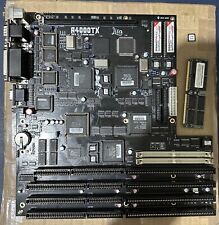
Amiga 4000TX computer motherboard
$2643.23
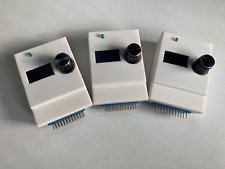
Mini External OLED AMIGA Gotek Floppy Drive Emulator For Amiga 500/500+/600/1200
$37.32
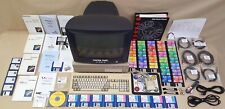
Amiga 2000 Desktop Computer 17" Monitor Video Toaster IVS Vector 68030 TBCs etc.
$3289.98

Amiga OS Operating System v3.1 Install Disks for Commodore Amiga
$34.98
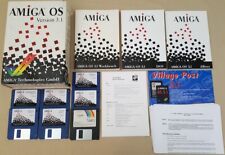
Amiga OS Operating System v3.1 Box Manuals & Install Disks for Amiga - Escom
$299.98

Amiga OS Operating System v3.1 Box Manuals & Install Disks for Amiga - Commodore
$299.98

Amiga 500 Gotek Custom Mount USB Floppy Emulator - Complete Kit with Gotek
$65.00
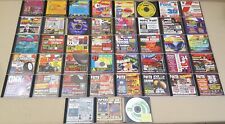
HUGE LOT of (43) Amiga Format Magazine CDs in Jewel Cases ©1996-2000 3000 4000
$525.00
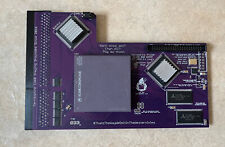
TF1260 including 68LC060 CPU, accelerator card for the Amiga 1200, 128MB Ram
$320.79
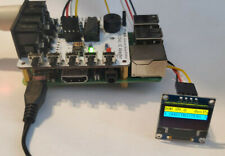
pi1541 Disk Emulator for Commodore -
$38.95




 Reply With Quote
Reply With Quote











